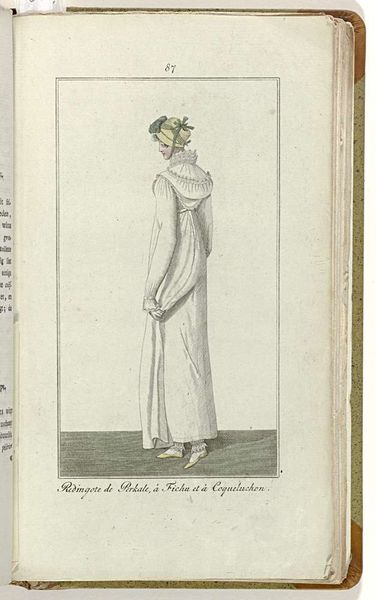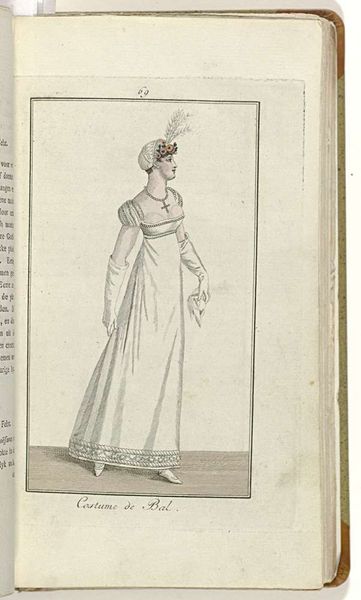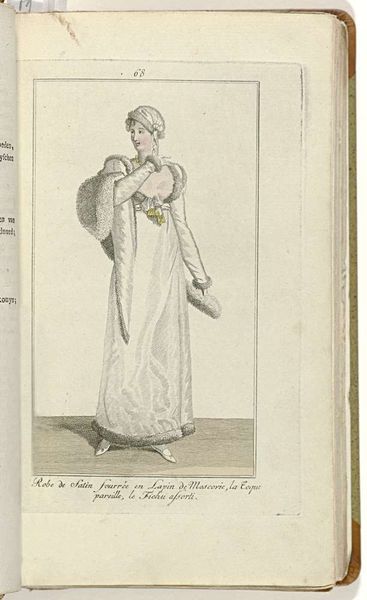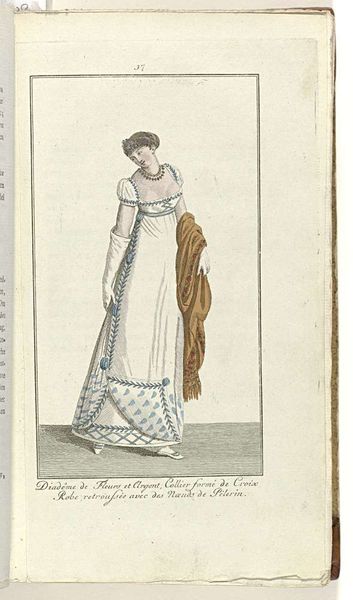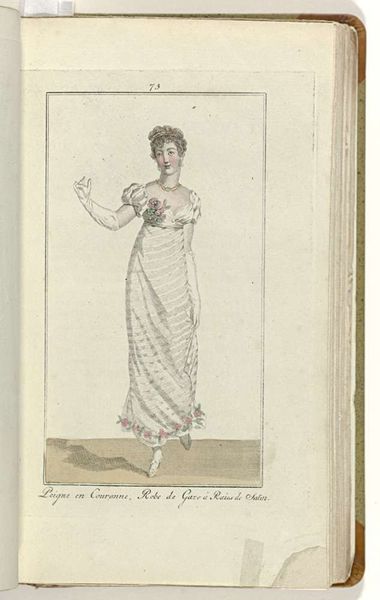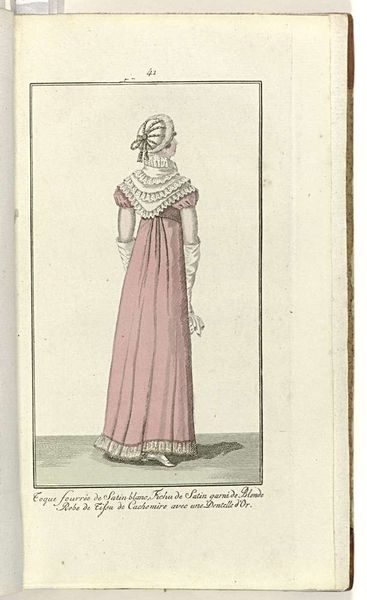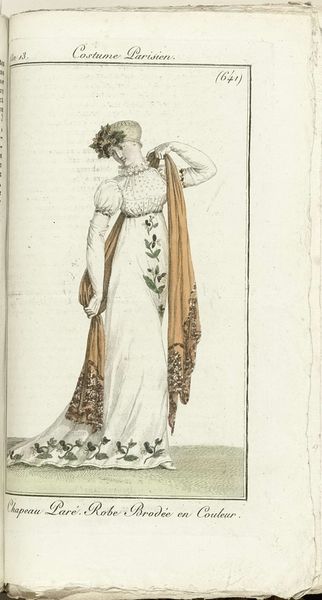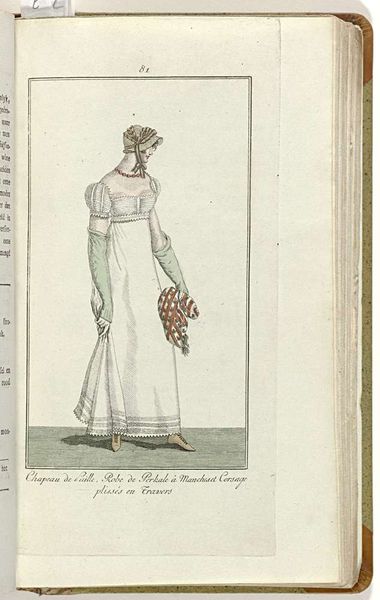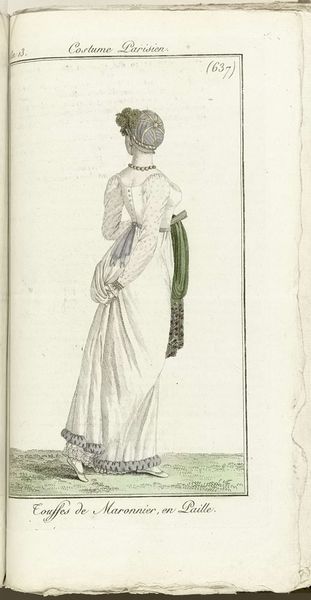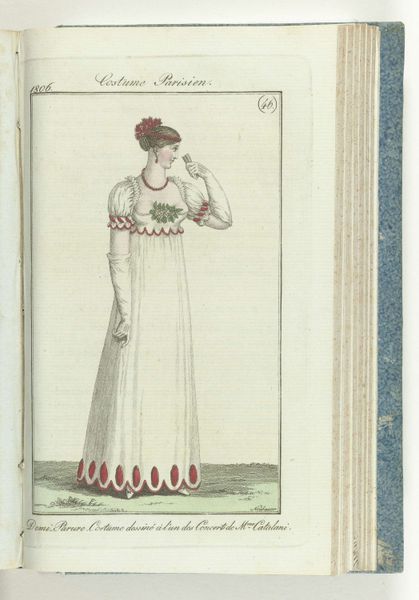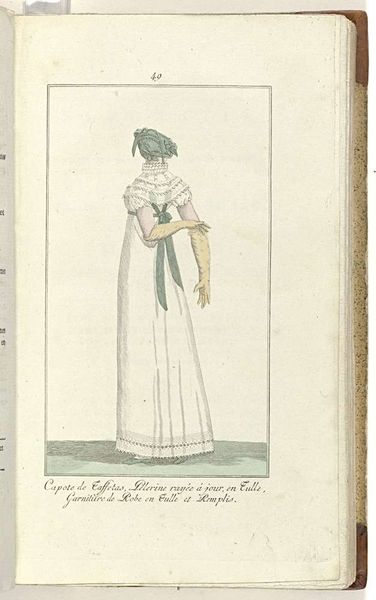
Elegantia, of tijdschrift van mode, luxe en smaak voor dames, Februari 1809, No. 70: Turban en Cheveux et Gaze... 1809
0:00
0:00
print, engraving
#
portrait
# print
#
old engraving style
#
romanticism
#
genre-painting
#
dress
#
engraving
Dimensions: height 220 mm, width 126 mm
Copyright: Rijks Museum: Open Domain
This fashion plate, made in February 1809, comes from the Dutch magazine Elegantia. The dress depicted, designed for a ball, is made of gauze, a light, translucent fabric with an open weave. Consider the labor involved: from cultivation of cotton or silk, to spinning, weaving, bleaching and dyeing, before even reaching the seamstress. The relative simplicity of the dress’s design belies this complex network of production. The delicate floral pattern was likely printed onto the fabric using engraved rollers, a relatively new technology that sped up production. Fashion plates like this played a key role in the industrialization of clothing, fueling demand and shaping tastes. The detailed rendering, achieved through etching and hand-coloring, conveys the texture and drape of the gauze, encouraging readers to imagine themselves in the latest style. What might seem like a mere image is actually a crucial document of material culture, revealing the close relationship between fashion, technology, and consumerism in the early 19th century.
Comments
No comments
Be the first to comment and join the conversation on the ultimate creative platform.
